
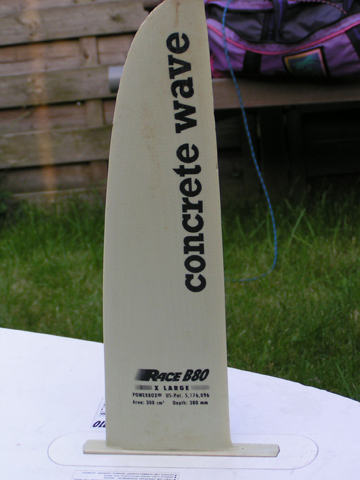
Major shock, from a Xantos to a wide body board
In 1999 windsurfing was in for another revolution. Until then boards had more or less arrow shapes and outlines. Starboard was a new brand in the market, and came up with a revolutionairy design. Their new board was more egg shaped and was extremely wide and extremely short. At fist everyone was very sceptical, but the new concept proved to be a big hit. Now every board is shaped like that. In 2005 I descided to sell the aging F2 Xantos. I got a 2005 Mistral Explosion 144 and a new 2006 Neil Pryde V8 8.0. This was going te be my lightwind set and also a fresh start to my windsurfing sport. I have taken some nice pictures of the Xantos from 1995 and the Explosion of 2005. it is interesting to see how different these boards are.
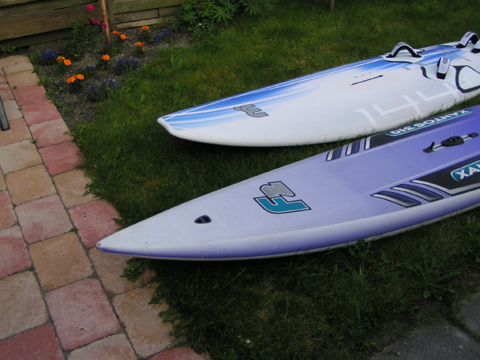
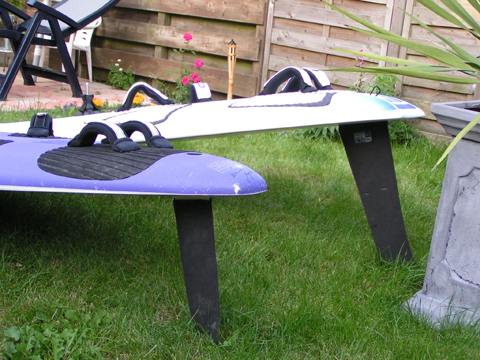
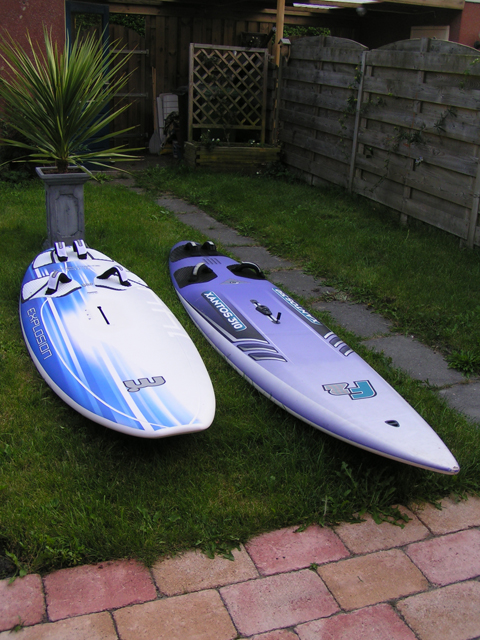
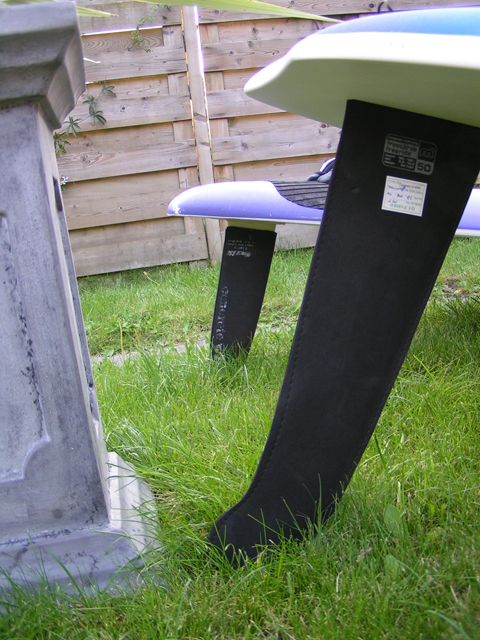
The mistral was a fine board, but I have had two mistakes:
This meant that after only 1 year I was already in for a better board. The board was a bit heavy at 9.8kg and I really wanted a more sporty board. I I have bought the more sporty an lighter LTD version I would have kept it longer.
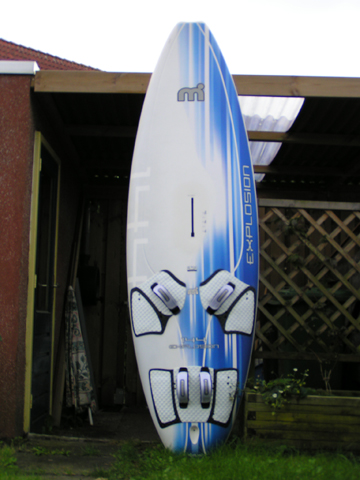
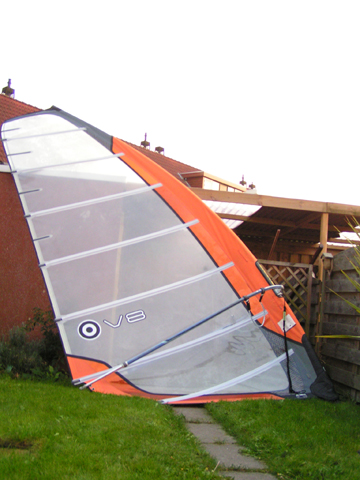
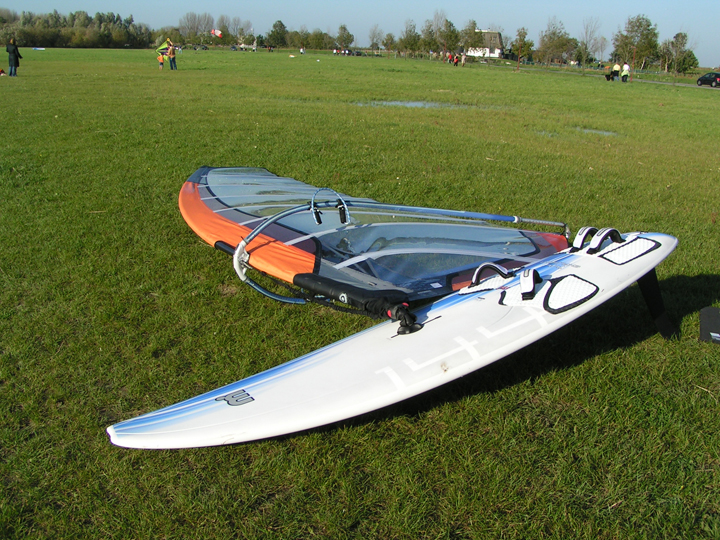
From Mistral to JP-australia
I was looking for a board to replace my Mistral Explosion 144. I was looking for a 75cm wide board at about 130L volume. I would be used from 10-20knots of wind (3-4BF) with my Neil Pryde V8 8.0 and V6 6.5. I was looking at JP's freeracer, but in 2007 they had a new board the Supersport 136. Fortunately someone at my local spot had it very early in the season (Okt 2006) and I was able to try it. I was sold right away. At 75kg I am a light surfer and the early planing capabilities, light weight and sporty ride was just what I was looking for.


I was trying to keep to the 1 board and 2 sails concept. But my skills and enthusiasm was getting so high that hated the fact that I was not able to sail above 5BF. So I started looking for a second board around 110L and a 5.5 sail. The board was the easiest one to find. Although it took me some time. I descided to buy a second hand board because I would use it only a few times. I was originally looking for a Supercross 105 or a X-cite Ride 110L. But then I found a mint used Supecross 116. It looked brand new and at 650 Euro it was a it above budget. But because it was amost brand new, if figured the extra money would be well spend.


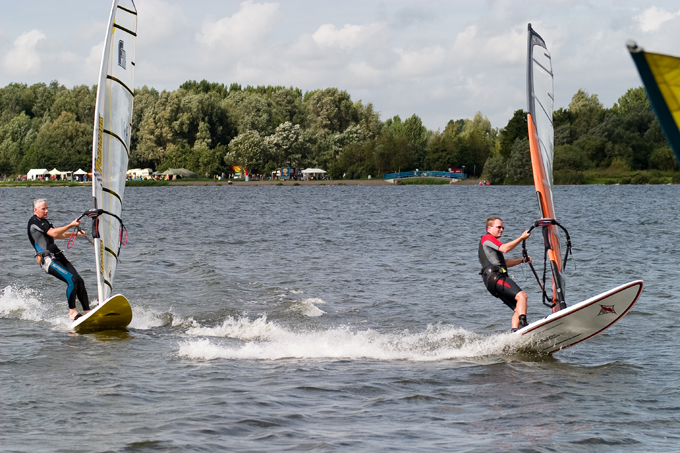
I already had a Neil pryde V8 8.0 and a Neil pryde V6 6.5. Now I wanted a 5.5 meter to complement the set. Neil Pryde however thinks that everybody is 90kg and has no cambered 5.5 sails. They have a Saber 5.7 as the smallest size, but that is too close to my V6. All other small sails are wave or cross over sails. So for the first time in my life I have bough a different brand a Gaasta Swift sail. Fortunately it was on sale and together with a matching mast it was about the price of a single V8 sail.
The sail itself is pretty good. On details it is not as good as a Neil pryde sail. But on the water is only a bit softer and a bit less stable than the V6. so for the price this is an excellent deal.
 Neil Pryde V8 8.0m2
Neil Pryde V8 8.0m2
 Neil Pryde v6 6.5m2
Neil Pryde v6 6.5m2
 Gaatsra Swift 5.5m2
Gaatsra Swift 5.5m2
Note: In 2008 Neil Pryde finally has a V6 and the RS:Slalom in small sizes like a 5.5.
© Eelco van Vliet, 2008